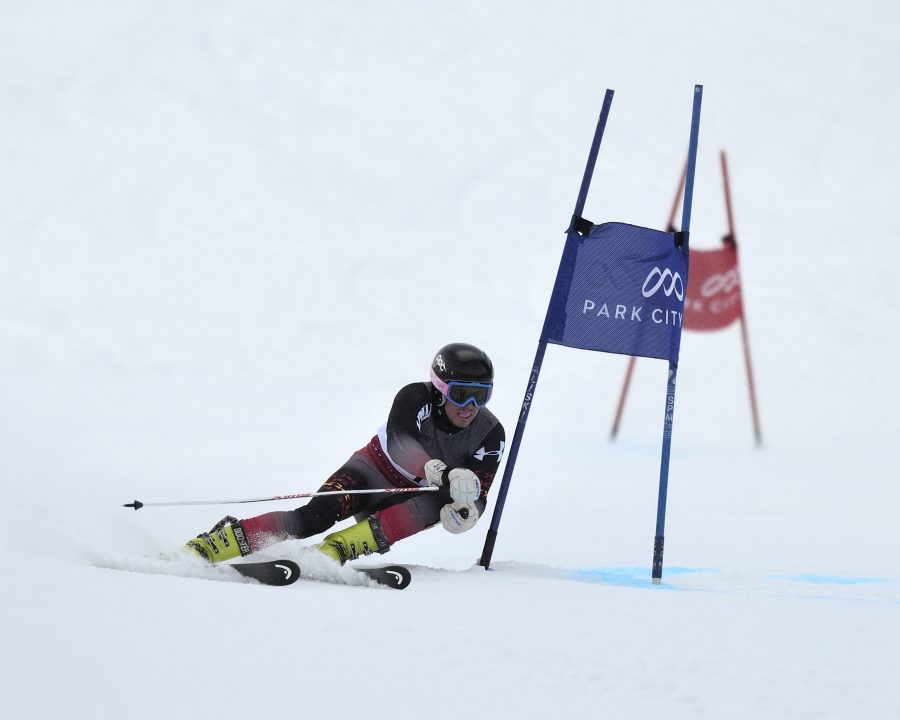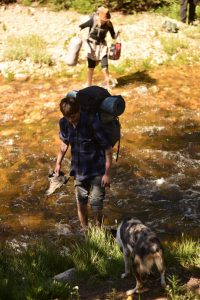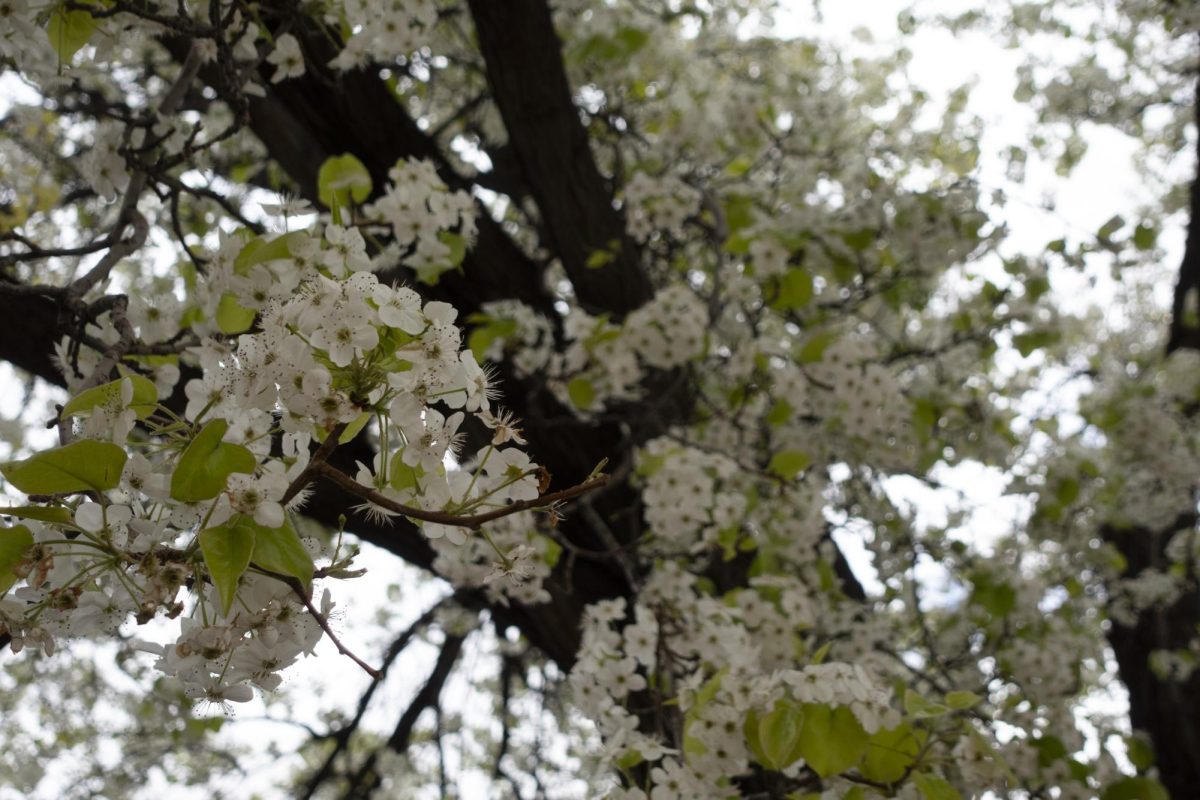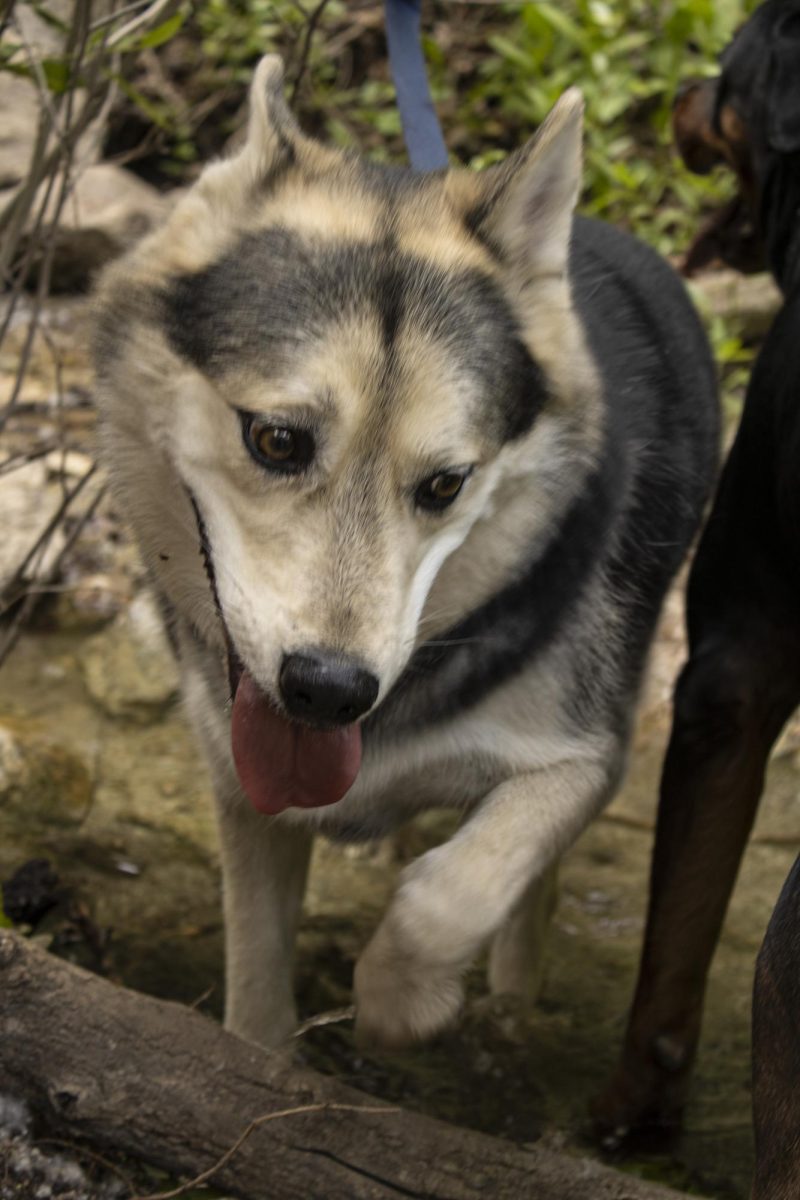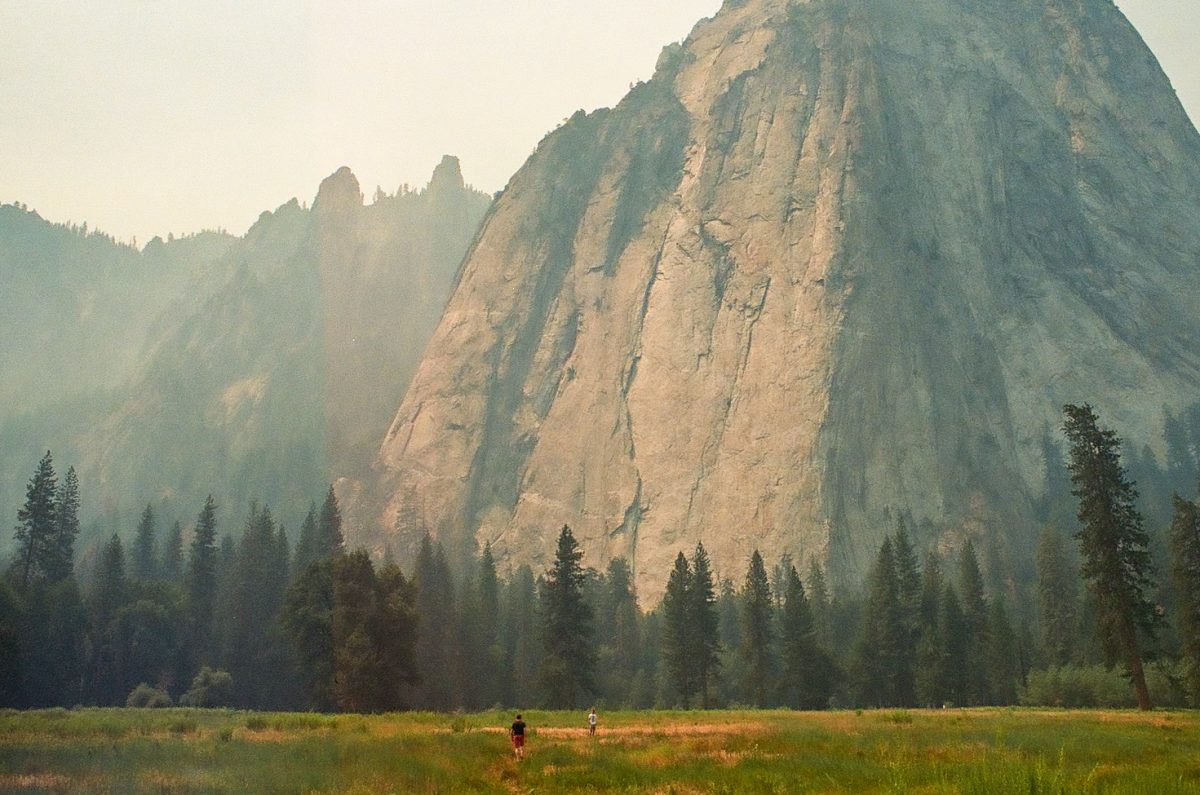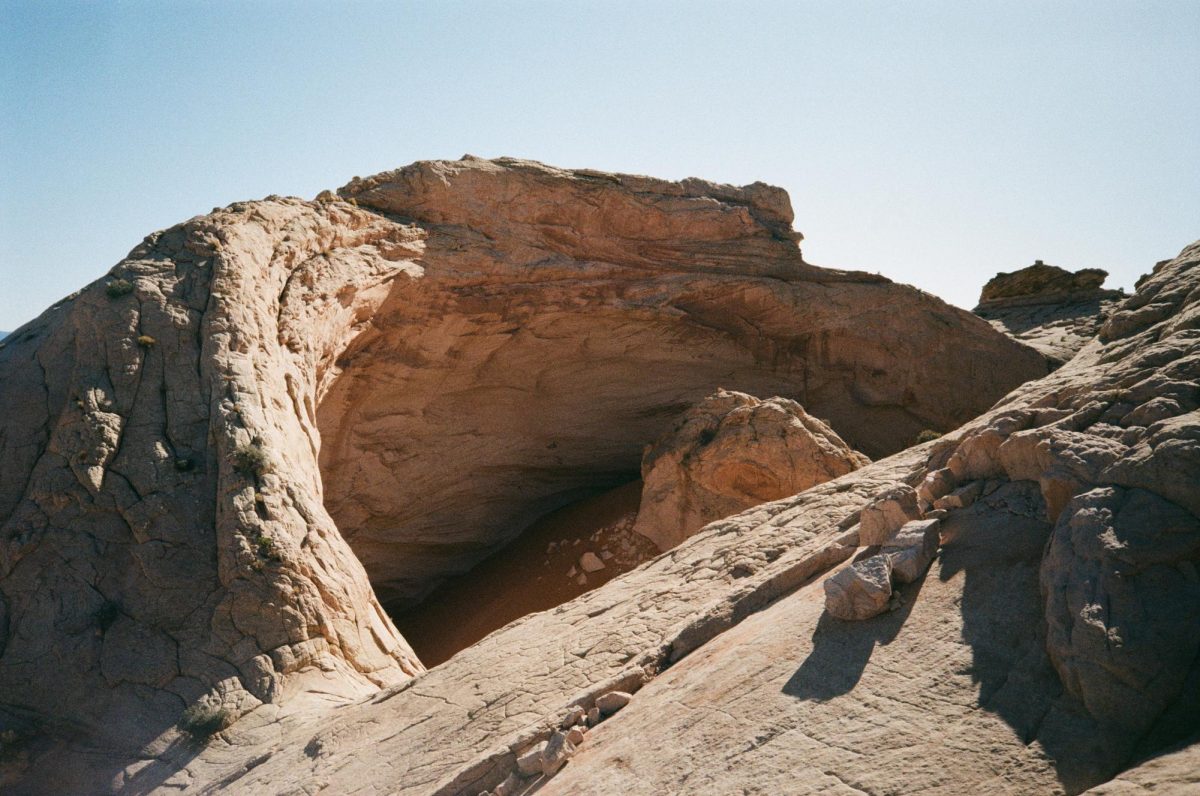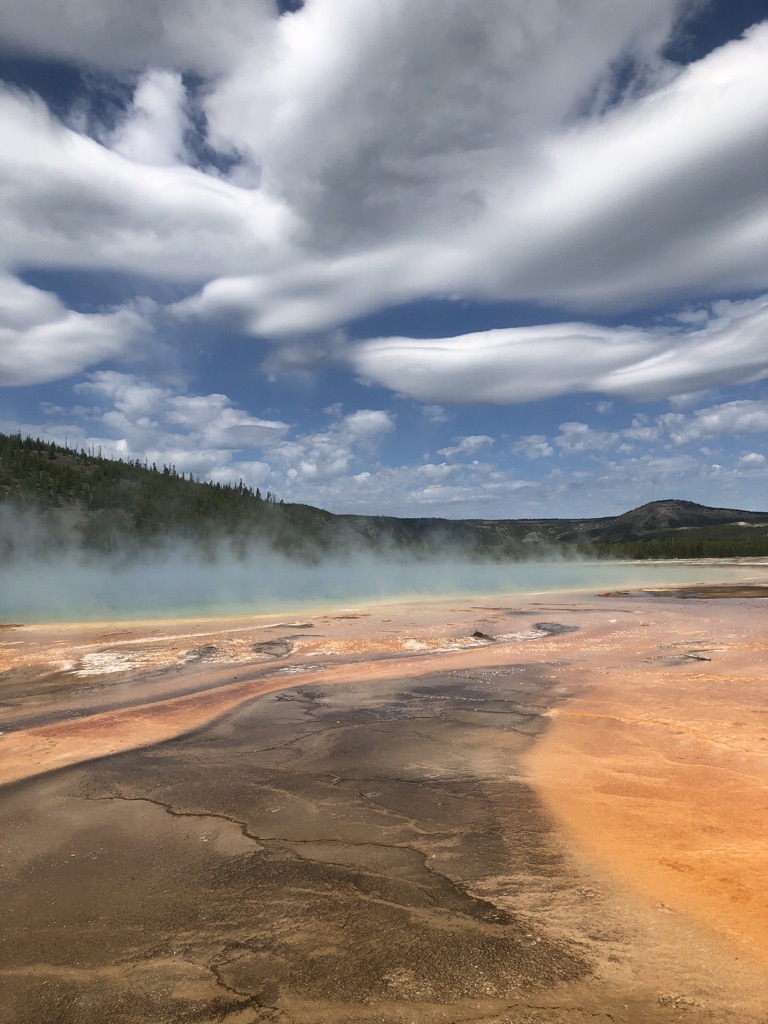Alternative Student Athletes; How Do They Do It?
University of Utah men’s ski team competes in the Giant Slalom at Park City, Utah (Park City Mountain Resort) on Wednesday, January 6, 2015
February 11, 2019
Utah may be home to some of the best outdoor spaces on the globe, both in diversity and quality. People flock to Utah, to appreciate the outdoors and sometimes to compete in their bounds. It’s not entirely surprising that the state hosts a number of world class athletes. Unlike stadium sports, skiers, climbers, mountain bikers, and others must travel to where their sport is traditionally performed. Or, at least most of them do– looking at you, gym rats.
For many young people, the first time they move out will be for college. Similar to how top-prospect football recruits pick schools for their facilities, many mountain athletes choose Utah for its access to the outdoors. For those looking to compete among the best in mountain sports, this is the place.
“I mean that’s why I’m here,” said Raph, a member of the U’s climbing team and a computer science major. “It was less like the people, I kinda figured there’d be outdoorsy people, it was more the location. I mean, for climbing, mountain biking, this is like the best place in the country to do it. It’s ridiculous, the fact I haven’t been to every climbing area in a five-hour radius is nuts!” Raph’s been climbing competitively since he was fourteen, and now as a junior, he has represented the U.S several times internationally in speed climbing.
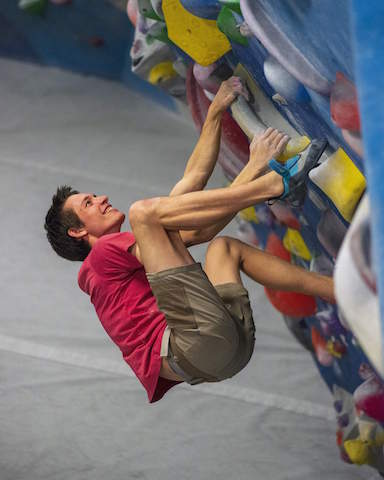
“Indoor and outdoor climbing kind of have a weird relationship, you can just train in the gym and win competitions. You don’t have to have the outdoor experience in a bouldering or especially speed climbing competition. But I think it definitely attracts more strong climbers to Utah. I think we have the highest density of nationally ranked climbers.” Climbers in Utah are particularly used to running into pros at local crags and gyms by this point. “Every Friday, Saturday, Sunday, we’re in Joe’s [Valley], or Little Cottonwood, or something. If work is particularly low, we’ll try and get to Little throughout the week.”
Whether dropping out and dirtbagging has fallen out of vogue, or if people now prefer to do it after they get their degree is hard to say. But world-class athletes from all over come to Utah to pursue school in a place that accommodates them and pushes them further. And why should dropouts be the stereotype of the successful mountain athlete?
“Normally the ones who are successful athletically are also motivated academically,” said Coach Hendrickson, the twelve year coach of the Westminster ski team, a team that’s trained Olympians and hosts French, Italian, and German national team members. To some, training on the snow five to six days a week minimum seems like it would be counterproductive to success in school, but Hendrickson says this is untrue, “not for the ones who do it for the right reason.” Those athletes are the only type Hendrickson looks for on his team.
Many student athletes report that the intense structure of their day around training gives them a lot of benefits. Having a strict schedule helps them academically as they have to maintain focus and have less time to procrastinate. “It’s not as hard as I thought it would be. If I’m training, I have to manage my time well,” agreed Raph. “It forces me to stay on top of my homework, if I have a bunch of free time, I get kind of lazy.” Not to mention, students on college teams are motivated by the fact that they must maintain a high GPA just to be allowed to compete.
Ashley skis with the U’s club team now and has been competing since she was five. “It’s definitely hard to manage with school but it’s something I’ve done for so long that I’m used to it. When we go to our races in Colorado and Montana, they’re six- or seven-hour drives on the weekend, but you can do homework in the car or balance homework after that. I think [skiing] definitely helps me balance what time I put away for school.” The club team is in an exciting time, as they’re now able to compete at regionals and against a larger circuit of teams, something Ashley is eager for: “It’ll be fun to compete against more people!”.
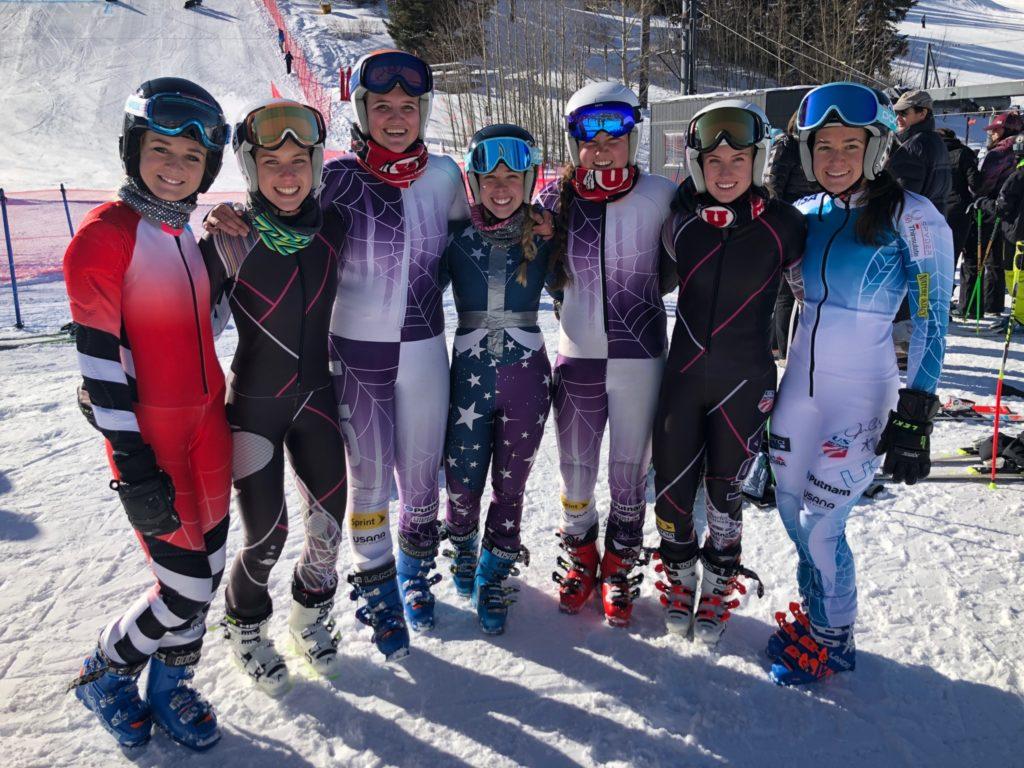
Balance seems to be the key, and many a philosopher has said this in so many words, whether regarding sports, school, or any other part of your life. Being an athlete isn’t easy though, and coaches and athletes alike know it takes a huge degree of discipline and focus to succeed. When preparing for nationals, Raph says “I just feel better as a human when I’m at my peak training, it definitely has a positive impact on my focus and schooling. We cut down the partying, you kind of save it and get it out later. It’s pull and push. I can’t go out multiple nights a week when I’m training twenty hours a week.”
People who want to give their all on the mountains, seem to give the rest of their life the same level of motivation. One would suspect it would be impossible to reach such a level of motivation in only one single aspect of a person’s life, but rather motivation is a systemic approach to the world.
The “right reasons” play a big role if you happen to compete in a sport that doesn’t deal in multi-million-dollar contracts. It’s easy to see why avoiding looking for relaxed and lucrative futures in mountain sports creates a culture all its own. Certainly, the best athletes are compensated well, but mountain sports provide a lifestyle worth more than any monetary reward.
It’s the same lifestyle that can be so beneficial to school, when applied. At the end of the day, most college students really want to be in school; they’re interested in their subjects and driven to go further in them, in the same way that our athletes seek to continuously improve.
There’s always been a positive correlation between exercise and nutrition and cognitive processes like learning. Basically, a healthy body is always going to help our minds, which are a part of the body. The activities themselves can serve us outside of basic physiology; sports challenge us far more than physically. “The differential effects of qualitatively unique types of exercise on immediate and delayed recall suggest that memory storage processes may be facilitated not only by exercise-induced increases in physiological arousal, but also by the cognitive activation induced by cognitive exercise demands.” (Pesce, Crova, Cereatti, Casella, & Bellucci, 2009)
Sports often involve abstracted problem-solving and require mixtures of physical expertise and mental cognitive skills. Our culture has long been saturated with the “dumb jock” archetype, and it’s something I’ve never been satisfied with. Sure, it’s easy to ignore academics if you’re extremely physically able, but most of these moments are in childhood and we move past into a more varied world. Hopefully, we grow out of TV tropes.
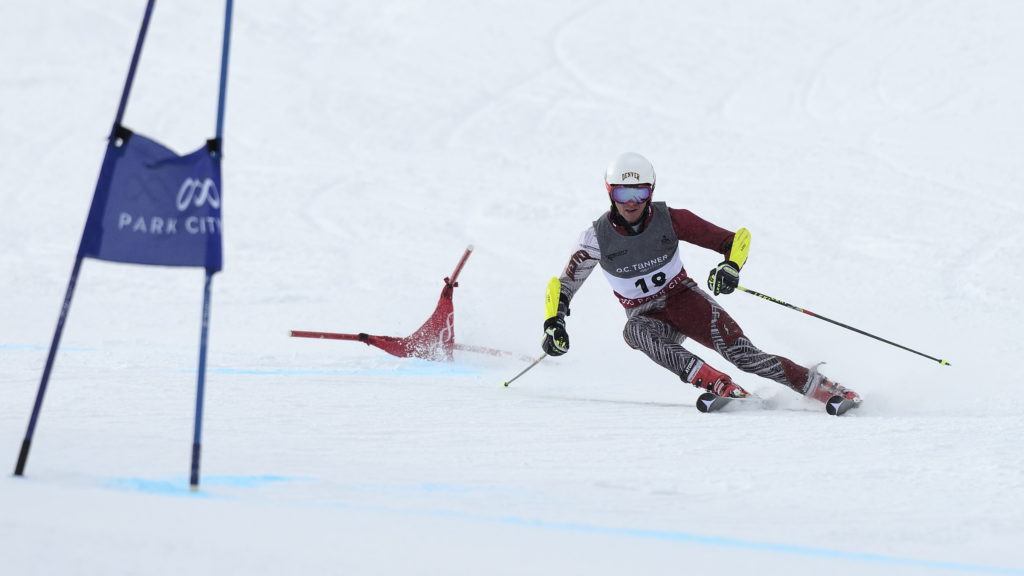
Few of us ever believe that we can coast through life on our rippling muscles and empty heads. And what would be the point? Is emptiness something anyone strives for? Why only push ourselves in one direction when we’re able to grow so many ways? This is the question posed by student athletes.
Modern training is multi-faceted to say the least. Excelling at sports on a world level goes so far beyond any semblance of “natural talent” that talent almost goes out the window entirely. Only someone merely looking in on a sport can watch an athlete flawlessly perform and think that it was based on their talent, rather than the probable decades of work that filter out the flaws. It’s a simple fact in life some learn, and some don’t.
Steve Prefontane was an endurance athlete who summed this sentiment up nicely for motivational posters everywhere: “To give anything less than your best, is to sacrifice the gift.” Whatever innate skills we might have must be cared for constantly or lost indefinitely, which is why most of those who don’t practice this basic ethos in all aspects of life can’t handle the student-athlete regimen.
Those who are truly successful for Coach Hendrickson are the ones who can do “both”. He says, “One doesn’t go without the other… There’s no secrets, sure someone might have a little more talent but it’s not a linear line up. There are bumps in the road, just keep going, work effectively and the best you can… but we’re not gonna bring someone in who’s not interested in school.”
Motivation clearly goes beyond specific discipline and probably rules our conscious lives more than any of us would like to admit, either through lack or abundance. A good question about motivation might be whether pure economic opportunity plays into an athlete’s decision to attend school.
Would things change if it became more accessible for mountain athletes to make millions? Right now, there are admittedly few opportunities to make even livable wages off of solely competing in outdoor sports, even as they grow vastly in popularity. But their growth is no question, and what were once fringe activities are now Olympic sports with massive training facilities in all major cities.
It begs the question of people’s reasons for pursuing a degree in the first place. Historically, educations were valuable across socio-economic lines. Perhaps education (or lack thereof) still exists as the biggest class divide; pursuing college at all is an undoubtedly privileged position to be in. Commitment to a degree takes years of perseverance no matter what, so by the end of college, those in it for reasons other than personal enthusiasm are usually weeded out or miserable. You’d have to be a masochist, even more than most mountain athletes, to do both without a deep affection for learning.
Concern over college athletics feeding into professional sports has existed for a long time. The College Sport Research Institute, reported as of 2017 that “NCAA FBS football players’ graduation rates reveals that historically and systemically NCAA FBS football players do not graduate at rates comparable to those of full-time male students at their universities.” This varies widely for demographics of course, which are things to investigate in their own right. Football has the highest amount of college-educated athletes of the top grossing sports. Approximately half of NFL players have a college degree, whereas around 21 percent of NBA players do (reference.com).
Olympic athletes are reported by NPR to have over an 80 percent college attendance, though tracking down their degrees is difficult. So, this doesn’t always mean graduating, but one wonders if there’s a difference in the way we push athletes to perform for us when they have the ability to generate cash not just for themselves but for vast institutions. This is highlighted further by the fact the top-paid employees in nearly every state are collegiate basketball or football coaches. In other words, it may be less to do with the training or competition itself but the expectations laid down on athletes.
Last February in the 2018 winter Olympics, the top college of the USA team was Westminster with twenty-one team members. While the top hometown with eight athletes is Park City, perhaps unsurprisingly to many. While Salt Lake City, Aspen and Ann Arbor tied for fourth with four each (npr). So quite a large number of Utah locals will be representing America on the world stage, along with the largest team of any nation there. Some returning to classes after that.
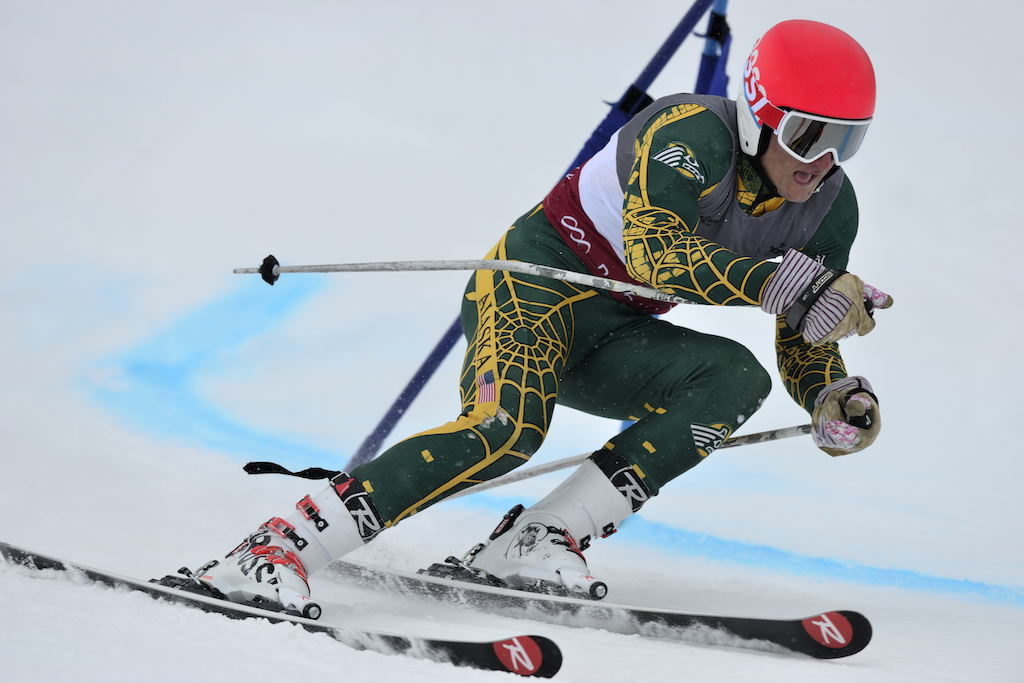
It’s also a more diverse team than ever before in both race and gender, though events such bobsled still don’t give women the chance to compete in the larger four-person event. More than half the team competing for the first time, some as young as seventeen. An age they might be moving out for college or life in general, statistically there’s a solid chance they’ll end up here.
No one could honestly be blamed for choosing to make good living being the best at a sport they love. In the hyper-competitive fields of modern athletics, where champions are made and broken by milliseconds, it follows that giving all your time, no questions asked, would be the obvious way to gain any edge. These professional athletes to do two things many people will never accomplish in their entire life: they earn a bachelor’s degree, which is still a large statistical minority (though growing, about a third of U.S citizens over twenty-five have one) (the hill.com), and they compete in a sport at a professional or even semi-professional level (which is an even smaller percentage).
Student athletes speak to rewards of school and sports beyond financial compensation. It’s about what the athletes get out of it all beyond medals and degrees. “I think it’s just fun to be in the mountains and skiing, going fast and competing. The environment plays a big part for sure. They can try to replicate it indoors but it’s not the same,” says Ashley.
Raph echoes that fun plays a central role for him and his sport. “It’s definitely a really fun experience, I’m really stoked on the whole student-athlete thing. It makes school a little harder at times, but whatever, you make good friends and competing is super fun, even if USA climbing is a mess which makes it hard. But I love training and going to competitions, feeling ready and going for it, it’s the best.”
Hendrickson sums it up nicely by saying, “All you can really ask is to be able to look at yourself and say I got the best out of myself, athletically and academically.”

